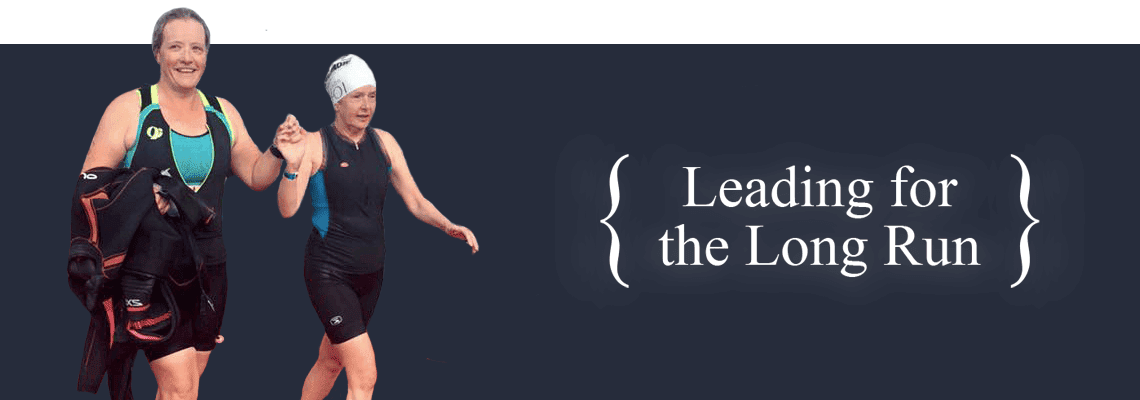When I tell people I am a blind triathlete, the inevitable question is: How does a blind person do triathlon?
The answer is, “Very carefully.”
Interestingly, the things that a blind person needs to do a triathlon are some of the same things that leaders need to enhance their leadership skills. Every person with sight loss doing a triathlon will have different methods and techniques for completing their event. Regardless of what techniques they use, there are three main requirements:
- The right guide
- Appropriate knowledge and equipment
- A positive attitude
The Right Guide
Just as leaders need mentors, blind triathletes need a guide. Once a person with sight loss decides to take on the challenge of a triathlon, the key question is who will guide them on this great adventure?
Choosing a guide is one of the most important decisions a blind athlete needs to make. The guide must be better than you at all events, so they can guide at your speed while assessing the environment. Your guide needs to be able to handle the distance you want to race, to be a great communicator and—probably most importantly—want to spend a lot of time with you (which may exclude your spouse from the list).
Appropriate Knowledge and Equipment
With your guide in place, it’s time to figure out what equipment will work best for your training and race, and what specifically do you need to know.
The swim component of a triathlon is usually open water, so a tether system is needed. My guide and I use belts with a tether rope connecting us. This way I can’t wander off aimlessly, and if I get too close to my guide, I may bump into her and adjust accordingly.
Before the race begins, it is important for me to know what I am facing. My guide tells me what the course is like and how far to each turn. We also work out a communication system since visuals are not possible, and we can’t hear each other with our ears under the water. We use a tapping system so I know where we are on the course and if I need to stop or turn. Since apologizing uses up valuable race time, we usually begin the race with, “I am sorry for any damage I may do to you, inappropriate places I may inadvertently touch, and any unattractive thing that may happen along the course.”
We use a tandem bike for the cycling component of the race. This is where good collaboration with your guide is needed. Tandems can be a lot of fun, but if you don’t collaborate with each other, you can find yourself on the ground pretty quickly. Having an extra peddler on the bike does help with speed, especially on the downhill, but uphill is more difficult.
The key job for the Captain in the front seat is to steer the bike, communicate the environment and say what is coming up ahead. The key job for the Stoker, sat at the back of the bike, is to balance the bike as much as possible, peddle hard, and in my case, hand over the food (not a good idea to have the Captain pass out from hunger).
For the run, I use a hand-over-hand method. Some people use a hand, wrist or waist tether, depending on sight levels and preference. The run offers the most time for communication. You might want to have a few interesting things to talk to your guide about to keep them interested and not have them wanting to leave you behind!
A Positive Attitude
The most important thing to have as a leader or a triathlete with sight loss is a positive attitude. Training and completing a triathlon takes effort and dedication for anyone, but doing this sport as a blind person adds even more challenges. Keeping a positive attitude will help you get across the finish line and help having your guide still like you for your next race together!
Di
